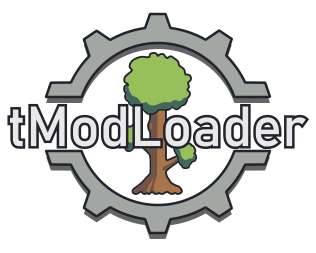How to Create Your First Terraria Mod in 2025
Ready to join the ranks of mod developers? This comprehensive tutorial will guide you through creating your first Terraria mod from setup to publishing, with practical examples and expert tips.
What You'll Learn
- • Setting up your development environment
- • Creating a custom sword with unique properties
- • Understanding tModLoader's C# API
- • Testing and debugging your mod
- • Publishing to Steam Workshop
Prerequisites
Required Knowledge
- • Basic C# programming (variables, methods, classes)
- • Familiarity with Terraria gameplay
- • Basic understanding of object-oriented programming
Required Software
- • tModLoader installed and working
- • Visual Studio 2022 (recommended) or VS Code
- • .NET 6.0 SDK or later
Step 1: Development Environment Setup
Creating Your Mod Template
- Launch tModLoader and go to "Workshop" → "Develop Mods"
- Click "Create Mod"
- Enter your mod name (e.g., "MyFirstMod" - no spaces!)
- Fill in author name and description
- Click "Create"
This creates a mod template in your ModSources folder with all necessary files.
Step 2: Creating a Custom Sword
Let's create a simple but effective custom sword. This will teach you the basics of item creation.
Create the Item Class
Create a new file: Items/BeginnerSword.cs
using Terraria;
using Terraria.ID;
using Terraria.ModLoader;
namespace MyFirstMod.Items
{
public class BeginnerSword : ModItem
{
public override void SetDefaults()
{
// Basic item properties
Item.damage = 45; // Damage value
Item.DamageType = DamageClass.Melee; // Damage type
Item.width = 40; // Hitbox width
Item.height = 40; // Hitbox height
Item.useTime = 20; // Use speed
Item.useAnimation = 20; // Animation speed
Item.useStyle = ItemUseStyleID.Swing;// How it's used
Item.knockBack = 6; // Knockback strength
Item.value = Item.buyPrice(gold: 2); // Sell value
Item.rare = ItemRarityID.Green; // Rarity color
Item.UseSound = SoundID.Item1; // Use sound
Item.autoReuse = true; // Can auto-swing
}
public override void AddRecipes()
{
Recipe recipe = CreateRecipe();
recipe.AddIngredient(ItemID.IronBar, 15);
recipe.AddIngredient(ItemID.Wood, 10);
recipe.AddTile(TileID.Anvils);
recipe.Register();
}
}
}Understanding the Code
- SetDefaults(): Defines all the item's properties like damage, size, and behavior
- AddRecipes(): Creates crafting recipes for your item
- DamageClass.Melee: Makes it scale with melee damage bonuses
- ItemRarityID.Green: Sets the rarity color (affects item name color)
Step 3: Build and Test
Using Build + Reload
tModLoader's best feature for developers is the "Build + Reload" system that lets you test changes instantly:
- In tModLoader, go to "Workshop" → "Develop Mods"
- Find your mod and click "Build + Reload"
- Wait for compilation (should take 5-10 seconds)
- Your mod reloads automatically with changes
- Test your new sword in-game!
Testing Your Sword
To test your new sword:
- 1. Open your inventory and check if you can craft it (you'll need iron bars and wood)
- 2. Craft the sword and test its damage on enemies
- 3. Check that the sound effect and animation work correctly
- 4. Verify the auto-swing functionality
Adding Advanced Features
Custom On-Hit Effects
Let's add a special effect when your sword hits an enemy:
public override void OnHitNPC(Player player, NPC target, NPC.HitInfo hit, int damageDone)
{
// 20% chance to inflict fire debuff
if (Main.rand.NextBool(5))
{
target.AddBuff(BuffID.OnFire, 180); // 3 seconds of fire
}
// Spawn some visual effects
for (int i = 0; i < 10; i++)
{
Dust.NewDust(target.position, target.width, target.height, DustID.Fire);
}
}This adds a 20% chance to set enemies on fire and creates fire particle effects on hit.
Custom Tooltip
Add custom text to your item's tooltip:
public override void ModifyTooltips(List<TooltipLine> tooltips)
{
TooltipLine line = new TooltipLine(Mod, "CustomTooltip", "A sword forged by a beginner modder!");
line.OverrideColor = Color.Orange;
tooltips.Add(line);
}Publishing Your Mod
Publishing to Steam Workshop
- Ensure your mod builds without errors
- Add an icon.png file (64x64 pixels) to your mod folder
- Write a good description.txt explaining what your mod does
- In "Develop Mods", click "Publish" next to your mod
- Fill out the Steam Workshop form with tags and description
- Upload screenshots showing your mod in action
- Click "Publish" to make it live!
Tips for Successful Publishing
- • Write clear, detailed descriptions
- • Include high-quality screenshots
- • Use relevant tags for discoverability
- • Test thoroughly before publishing
- • Respond to user feedback and comments
Congratulations! You're Now a Mod Developer!
You've created your first Terraria mod! This is just the beginning - tModLoader's API can do incredible things. Explore NPCs, projectiles, tiles, and world generation next.
